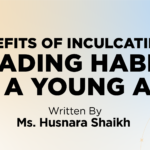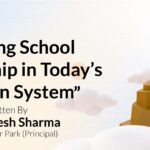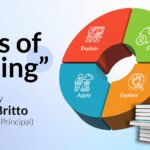A learning style is an individual’s approach to absorbing and processing information, which mostly enters the brain through sight (visual), hearing (auditory) and touch (kinesthetic). Every child learns in a slightly different way, experts say, and figuring out your child’s own learning style can help assure academic success. Parents need to keep their eyes and ears open to figure out what works best for their children when it comes to learning, “Some children are hands-on, while others work best through language and do well with reading,” Some children understand things better than they remember them. There are many different patterns of learning, and the best thing that a parent can do is step back and observes what seems to be happening and what seems to be working with their child.”
Experts have identified 3 primary learning styles into which most people fall: visual, auditory, and kinesthetic. Even at a very early age, observational clues can indicate a likely learning style. Once you identify whether your child learns primarily by looking, listening, or doing, you can help shape their educational experience so that it prioritizes this primary learning style, while at the same time not ignoring the importance of well-rounded learning.
Use the information below to learn more about each style so that you can identify your child’s learning style.
Kinesthetic Learners
Kinesthetic learners are physical. You’ll know if your child has this strength if she is great at sports or a natural dancer. These learners usually have a strong sense of balance, and they learn best by touching or doing things themselves. For example, this kind of learner tends to use a lot of gestures, or she may count on her fingers or clap along while she is counting.
Kinesthetic learners may have even exhibited some of these characteristics as babies or toddlers by being early crawlers and walkers, or especially physical babies. If so, these strengths have probably stayed with her as she’s grown older.
Indications your child is a kinesthetic learner:
• Aptitude in sports, dance, or other physical activities
• Tendency to fidget while in her seat — she may need to move while processing information
• Frequent use of gestures when speaking or explaining things
• A love of hands-on activities and play-acting
• Enjoyment of writing, drawing, or handwriting exercises
• Early physical development, such as walking, crawling, or sitting early
• Sharp hand-eye coordination
Auditory Learners
Auditory learners are drawn to sound. They may be especially musical and show an aptitude for playing instruments or singing. They are good listeners and often have verbal strengths. They follow oral directions well.
As a baby, did your child perk up when conversations were going on around her? Did she notice the sound of the rain when other children were oblivious to it? Does your child better understand when she reads aloud to herself? If so, then you probably have a child who learns best by listening.
Indications your child is an auditory learner:
• Aptitude in music, instruments, or vocal ability
• Tendency to sing along to songs or to create her own songs as she plays
• Strong verbal ability, especially through repetition of words or phrases she’s heard before
• Ability to listen well and follow verbal directions
• A love for talking and discussions
• Sharp ability to notice sounds that others don’t recognize
• Perking up when she hears music or dialogue
• Visual Learners
Visual learners are observant of the world around them and are drawn to art. You may notice this kind of learner looking at paintings, lingering over illustrations in books, and showing keen interest in photographs. Visual learners tend to enjoy screens — whether computers, televisions, or movies, and they retain the information they find there.
These kinds of learners also have vivid memories. If your child is a visual learner, she may be especially skilled at remembering names, places, and people. She may have even exhibited these skills from a young age, by recognizing the places you’ve returned to together.
Indications your child is a visual learner:
• A vivid imagination
• An interest in art: painting, drawing, or crafts
• A strong memory that relays visually observed information
• A good sense of direction and an understanding of maps
• An aptitude in reading and a love of books
• Recognition of people, faces, and places
• A keen interest in observing the world around her
• Your child probably has some aptitude in each of the three learning styles, but if you look closely, you might see that one of them is particularly strong. This recognition can help you tailor your child’s learning process and build on her innate strengths in the future.
Thus, by becoming aware of how your child’s brain learns best, you can tailor their learning process to help them study smarter and reach their highest potential.











